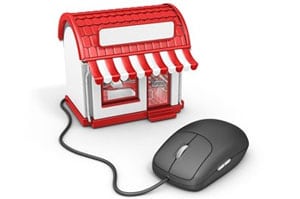 The consumer is king, and wants what he wants when he wants it. Thanks to Amazon and big-box retailers, they expect to define their own shopping experience in real time. That experience—no longer constrained by physical location—is what we now call omnichannel.
The consumer is king, and wants what he wants when he wants it. Thanks to Amazon and big-box retailers, they expect to define their own shopping experience in real time. That experience—no longer constrained by physical location—is what we now call omnichannel.
Forward-thinking merchants have already made omnichannel a reality. Here’s why:
- Omnichannel shoppers are more profitable. Consumers who shop across channels spend more: Deloitte found recently they spend a stunning 76% more on holiday purchases than those who just shop in stores.
- Omnichannel shoppers are more informed. These same consumers access an average of 10.4 sources of information to determine what, when and where to purchase.
- Omnichannel shoppers are more engaged. Mobile devices, including the emerging category of wearables, enable deeper consumer engagement and pave the way for cost effectively driving sales via loyalty/rewards programs, targeted promotions, flash sales and retailer-specific apps.
Get Ahead of the Curve
Yes, retailers want to emulate Amazon and other leading merchants, and compete with them. But wanting to and being able to are two different things. Between 30% and 40% of companies believe they’re lagging in omnichannel capabilities, according to the Retail Insight industry benchmark study. It found only 18% of companies feel they’re ready for mobile commerce and only 11% for cross-channel fulfillment.
Yet retailers and suppliers are feeling significant pressure from rising expectations: 75% are experiencing increased demand for rapid fulfillment and 44% for more robust item information.
So what’s a merchant to do? Go omnichannel, of course, as consumers already have. We’re already seeing the industry’s adjustment to this, and lip service won’t cut it. Consumers are demanding real services, including free or low-cost shipping and convenient returns, and the ability to see and touch products in stores and then shop on smart devices for better deals.
According to IDC, more than 78 million shoppers will routinely go omnichannel by 2017. Many of them will also be swayed by search engine recommendations, which wield more influence over purchasing decisions than recommendations from family and friends.
This is why merchants are expanding online and app-based product offerings. It’s also why they’re choosing suppliers willing to ship direct to consumers, eliminating the need to own inventory, store it, package it or ship it. And when suppliers are willing to carry more products and provide additional information like photos, videos, consumer reviews, warranty information and shipping details, sales increase.
The result is a win-win for retailers and suppliers. But how do retailers find and manage suppliers? One way is via network-based supply chains.
Just as social networks have changed how individuals, brands and companies connect with one another, network-based supply chains are changing how merchants, suppliers and 3PLs connect. They can share information and integrate operations via the cloud. They can also capitalize on relationships to make the most of real-time triggers, be it heat wave, a new hit movie or a trending item on Pinterest.
No matter where you’re at in your omnichannel journey, here are 3 things you can start working on now to advance it:
Engage consumers with robust product data
Today’s consumers want detailed information in order to make well-informed purchase decisions, and merchants need realize they’re losing patience with sub-par shopping experiences.
See for yourself by shopping for Nike’s LeBron men’s basketball shoes. On Nike.com, you’ll find color photos, a detailed product description, a comprehensive list of benefits, dozens of consumer reviews and even a video of LeBron wearing his signature shoes. Stroll over to Amazon.com, and you’ll find a few photos, some bullets, no benefits and only a handful of reviews.
Ensure item data accuracy
Consumers expect—and deserve—accurate product data or they’ll shop elsewhere or return the product. One of my colleagues was recently shopping for a new refrigerator. She visited a number of retail stores, including a national big-box chain where she saw a model she liked. A few days later, she went online to verify the model’s dimensions and found it measured 1” x 1” x 1.”
So either it’s the world’s smallest refrigerator or the retailer got the dimensions wrong. And if the dimensions are wrong, what else might be wrong? No surprise, she took her business elsewhere.
Facilitate returns
A colleague once placed an online order for 15 pairs of shoes—five different models of three sizes each. The merchant was happy — that is, until she returned all but one pair. Such habits are common. According to retail consultancy Kurt Salmon, as much as a third of all Internet sales are returned, often to a location where they collect dust until sent to a jobber for discount sales or returned to the supplier.
Forward-thinking merchants and suppliers are making it easy for consumers to return unwanted merchandise by slapping on a pre-printed label and shipping it off – a win-win for both parties. And the merchants are improving returns management.
The retail world will continue to create new technologies that give consumers a greater ability to personalize their shopping experiences, and merchants who understand are gaining an important competitive advantage. Join them by embracing omnichannel today.
Peter Zaballos is the vice president of marketing and product at SPS Commerce
